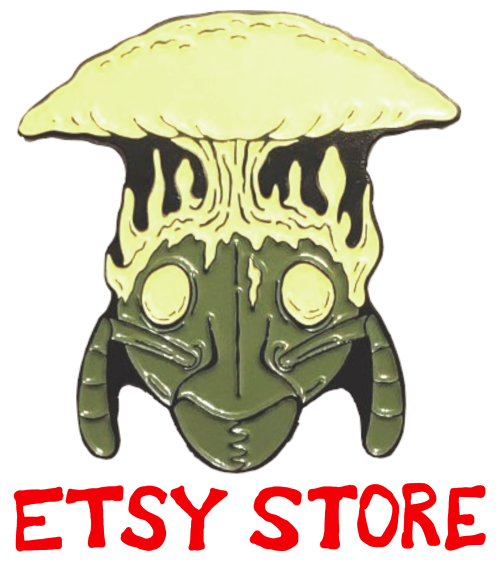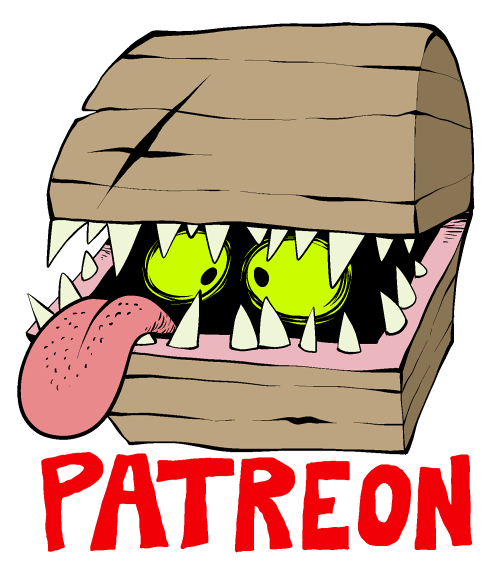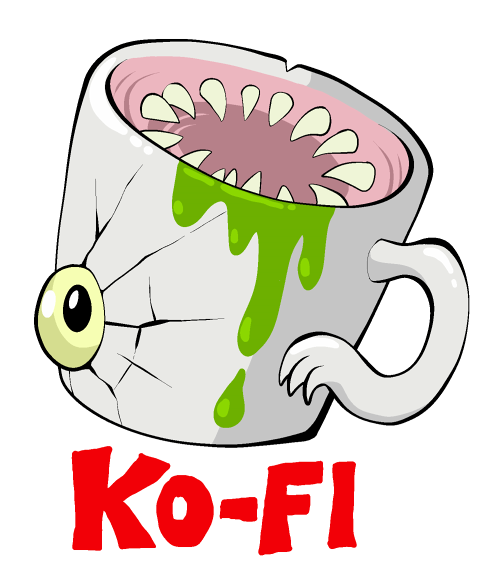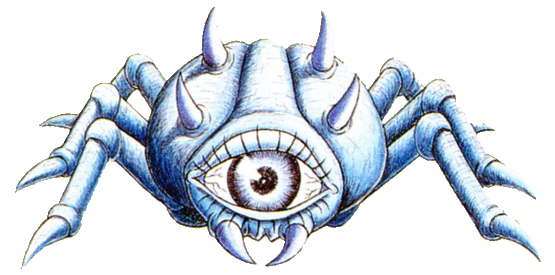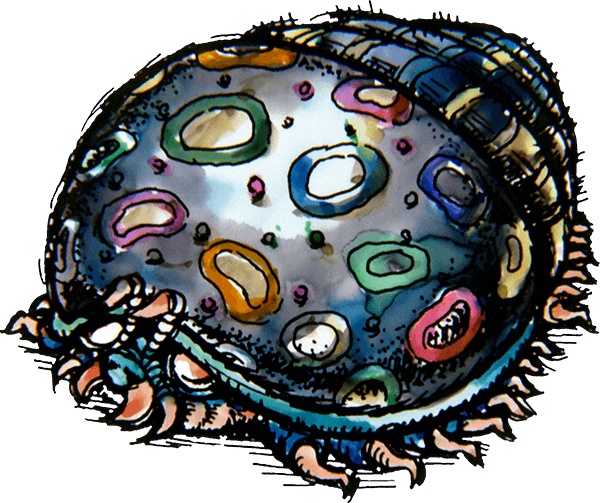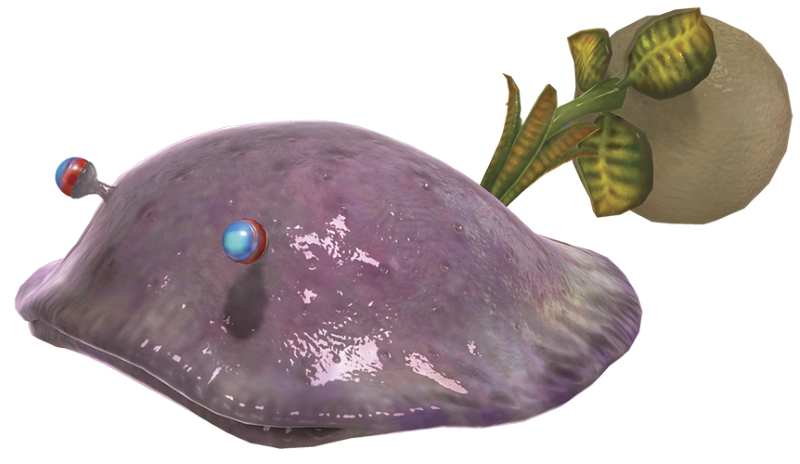
The Legend of Zelda:
Wind Waker Monster Reviews!

I was in my mid teens when Wind Waker came out in 2002, and some of you will find this almost inconceivable, but I remember the outrage like it was only yesterday. Sites like "Gamefaqs" exploded with flamewars over the "childish" and "stupid looking" cartoon visuals, thousands of fans adamant that the series was meant for a realistic, dark and gritty atmosphere; Ocarina and Majora's Mask, in their eyes, had already established what a 3-d Hyrule was supposed to look like, and they had been eagerly anticipating more of the same. Perhaps the most common word I saw used to describe the game's appearance was "gay," which in 2002 was supposed to mean that it was uncool and bad.
Personally, I thought it just looked fun, but I wasn't a big Zelda player, so what did I know?
Two decades later, Wind Waker is remembered by the fandom as such a beloved masterpiece, a high-definition rerelease was criticized for varying in even the smallest ways from the original graphics, which is arguably nitpicky, but it's also kind of heartwarming to see something go from being so ridiculed to being that respected. Especially after even Miyamoto himself was so resistant to the lighter style, much of the development team had to essentially hide it from him. They had fallen in love with the idea of a "toony" Hyrule, they believed in it enough to even defy the biggest deal of a boss you could ever have in the industry, and while it did take a while for the sales to pick up steam, they were definitely validated in the long run.
And that "toon" take on Hyrule made some great additions to Zelda's enemies and bosses.

BOKOBLIN
These are common enemies in much of the series now, but some may forget that they got their start in Wind Waker as a smaller, more plentiful alternative to the moblin! So I guess they're Hyrule's "goblins," if moblins are the "orcs." There isn't much to say about them as a design, except that, like the moblins, I appreciate their piggy features

CHUCHU
The chuchu we were introduced to on the Nintendo 64 were tired looking, stalk-eyed slug creatures with unsettlingly human lips and teeth. Delightful, though not the kind of creature I'd expect from a name like "chuchu." In Wind Waker, they're reimagined as as bulb-shaped creatures with little pseudopod-feet, kind of like Wobbuffet in overall shape, but big round pink-rimmed eyeballs and wide mouths giving them a more fish-like face. I feel like the two are distinct enough that they could have continued to coexist with two different names, but I do like them both. With some of them being electrically charged, I guess they're also successors to the Buzz Blobs.

Moblin
Speaking of moblins, Wind Waker exaggerates them in a charming Looney Tunes sort of way; teeny tiny feet, giant muscly arms and a huge head that's 70% underbite. They lean more into being pig-like creatures than the more bulldog-like moblins of Ocarina, and I like the pale green of their eyes.

MINIBLIN
Rounding out the goblinoids are the poor little miniblin, the weakest enemies in the game! They don't seem biologically related to the moblin or bokoblin at all, however; they appear to be furrier, with little black noses and big incisors that make you think some kind of rodent, but they've also got horns! Imagine being named like you're the "mini" version of something totally unrelated. Or maybe "blin" is just kind of Hyrulian for mammalian monster people?

BOKO BABA
I already liked the Deku Babas of previous games, but this related or convergent snappy plant has a much more distinct personality to it with its curved smile, chunkier lower jaw and markings that resemble four gloomy, crescent eyes, giving it an almost "apologetic" sort of face as it attempts to swallow you whole. This saw-toothed head also emerges from a large flower bud that can be found throughout the same environment, but isn't always a baba! Is this a form of mimicry, or is it simply more mature?

PEAHAT
A drastic change from previous peahats! The propeller blade consists of three exceptionally long, floppy yellow petals not unlike a banana peel, connected by a thin stalk to a dumpy pear-shaped "body" with a number of blunt thorns and short, curly roots sprouting from its yellowish lower half. The grey-green upper half, meanwhile, possesses a bulging blue eyeball on each of its three sides. If they are indeed functioning eyes, then this is the first peahat with any "facial features" at all, I think. It sort of betrays the faceless, flying plant aspect of the monster, but it's still very charming. Peahat can have eyes now and then. As a treat. I also can't help reading the wavy border between its darker top and lighter bottom as where a "mouth" would go, too, like some sort of radially symmetrical cartoon frog.

OCTOROK
While they can't hope to compete with the Octoroks of the last two 3-d titles, Wind Waker's cephalopods are still lovable enough. They're more traditionally octopus-like, but with broad, flattened arms and longer, wavy, ribbony tentacles more reminiscent of a cuttlefish. Their black eyes have intensely neon-green, horizontally elongated pupils giving them a very cool, slightly hostile looking personality, and their upper heads are interestingly exaggerated. The pinkish rock-spitting variety has a shell on top kind of like a spike-covered clay pot, while an aquatic, bomb-spitting variant has a smooth, hourglass-shaped "vase" head with ornate markings. It's difficult to tell whether these are an organic part of the creatures or pottery they're inhabiting, which is fun, because living in a sunken urn or bottle is already common visual cliche of octopods in Japanese media.

BUBBLE
Bubbles are back, and this time they look like lovably silly floating skulls, surrounded by bubbly blue mist. There isn't much more to them, but I'd feel bad overlooking them!

WIZZROBE
In the instruction booklet for the original game, Wizzrobe was depicted with a pointy nose mistaken by some other illustrations as a bird's beak. So was Wind Waker referencing that, or did the team coincidentally decide that their Wizzrobes would actually be bird people? They're basically giant toucan wizards with colorful, maniacal eyes, and their feathery wings are shaped precisely like dangling wizard sleeves. Neat! I kinda wish they'd consistently stuck with a bird motif to Wizzrobes for the rest of the series, even if it was otherwise going to keep changing.

REDEAD
Redead are once again the most sinister looking non-boss monsters in a Zelda game, though they're still "goofier" here to match the rest of the aesthetic. They're naked, emaciated, dull teal corpses with greatly enlarged, hairless and noseless heads. They've got beady, glowing red eyes in black sockets, blocky white teeth and gums in lipless mouths, and pointed ears with heavy looking gold rings, I guess to give them a kind of "tiki mask" look, though not quite "tiki mask" enough to reference any particular culture, which works out for the better. You get the impression of a cadaver prepared for undeath under some pretty dark and arcane ritual practices, but if their lore remains the same as previous Redead, they've officially never been living humans at all, but are either "dolls" brought to life or even constructs of pure magic itself.

SEAHAT
SEAhat!? This reskinning of the peahat is no longer a flying helicopter flower creature, but a flying helicopter fish creature. It's something like a spiny black anglerfish, almost entirely head with a large mouth and tiny fishy eyes, but it has three eel-like tail things on top that spin around. It obviously can't be related to the peahat by biology, but must have been named after the plants due to their similar outline and habits.

FLOORMASTER
Wind Waker has Floormasters, but not Wallmasters, if you cared about a distinction that has never been defined all that consistently, but I believe this is the first time either of them were attached to an entire appendage, having previously always just been giant hands ending at the wrist.It's also the first time either of them have been depicted with an ethereal shadow-like form, reaching up from a portal, and unfortunately I'm just not a fan. A huge, severed monster hand scuttling or floating around a dungeon is interestingly grotesque and inexplicable, but a ghostly shadow arm phasing out of a dimensional rift is actually much more common imagery. It makes a boring amount of sense for it to just be some kind of dark spirit, you know???

GYORG
Gyorg is basically just a Hyrulian shark, differing from an Earthlian shark by being purple, having catlike slitted eyes that would never make any sense for an open ocean predator, and having chunks of rocky material growing from its snout, a good adaptation if you've lived alongside the existence of boats long enough to learn they carry meat around.

BIG OCTO
There's just six of these giant size Octoroks in the sea, with tall, flat upper heads bearing four to twelve eyeballs, which have to be targeted one by one to defeat them. Fairly neat looking, you don't see a lot of cephalopod monsters with a many-eyed gimmick. Instead of firing either rocks or bombs however, it just sucks you in and spits you out as its primary attack method.

MAGTAIL
Giant, segmented invertebrate monsters feel so iconic to this series, it really doesn't feel like a proper, finished Zelda game to me without its own take on a Moldorm or a Lanmola. The lava-dwelling Magtail is Wind Waker's non-boss offering, a pretty cool looking arthropod with dull purple armor plating and an intensely orange underbelly. Its large head has a spiky crablike carapace on top, huge chunky mandibles that remind me of a whipscorpion's palps, and of course a single eyeball in the middle. You REALLY have a proper Zelda Bestiary when you've got a multi-segmented invertebrate cyclops.

POE
The Poes this time around have bodies like cloth bags, even tied shut at the top! With no faces of their own, they wear stylized wooden masks with sad looking, painted-on swirly eyes and a separate lower jaw piece, the mouth carved as just a jagged line. As per Poe tradition, they carry lit lanterns, and like Poes in several games they can possess Link to reverse your controls. Their animations are cutely pathetic, especially when they run around in a panic because you shone a light on them for too long, which is what makes them tangible enough to attack.

STALFOS
Stalfos are upgraded in Wind Waker to a mini boss encounter, then continue to appear as particularly tough enemies. With short little legs, very long arms, a huge jaw and relatively tiny cranium, they actually look like they could be the reanimated skeletons of Moblins! They wouldn't fit inside the game's Moblin model perfectly, but the anatomical similarity between them is almost unmistakable once you're looking for it.

MORTH
Everyone loves MORTHS! They're simple little black spheres with one eye and a bunch of sharp spines, which actually can't hurt you, but they can stick to you and weigh you down until you shake them all off! Rascals!!! They resemble sea urchins, and this is a nautical adventure, yet they're not sea creatures at all! They're found in the woods, their appearance and behavior bringing to mind ticks, sticky seeds and chestnuts.

MOTHULA
Mothula was introduced as a giant moth boss in A Link to the Past, but in Wind Waker it appears as a mini-boss encounter and then an enemy, with an absolutely AWESOME design! Huge, green feathery antennae, one circular luminous eye, a prickly hairy black body with long skittery cockroachy legs, a fat colorful abdomen and eerie eyespots on its huge, spiral-tipped wings, when it has wings. You'll encounter both flying Mothula and wingless, scurrying Mothula, and it bears mentioning that there are moths in real life with completely wingless females, so maybe that's what's going on here? It's my second favorite thing about them, in any case.My first favorite thing about them is that they spawn MORTHS! They even have the same exact eye design to indicate a direct biological relationship! They could just be a unique thing Mothula produce as self defense, but the intent is probably that they're the "larvae," especially since you encounter them in the wild with or without a Mothula nearby. I love the idea of these moth creatures growing from little sticky eyeball urchins instead of caterpillars, though in case you want a more obtuse hypothesis with more entomology in it, all Mothula spawn Morths, whether or not they have wings, so maybe the wings aren't indicative of gender at all, and the Morths are tiny parasitic males? It could even simply be that males don't undergo metamorphosis into the mature stage, if they exist only to fertilize the females. "Dwarf males" are a thing in several real organisms, including dwarf males that live in or on the bodies of their mates. Goose barnacles do it all the time!

DEXIVINE
Can't forget these fellas! They're similar in behavior to the "Dexihand" and the appendages of Dead Hand from our previous couple of games, but a Dexivine is a slinky purple tentacle ending in three opposing claw-like petals, which can latch onto you and drain your magic energy. They're also easy to cut down, but grow back fast! Mighty intriguing organisms, these magic-leeching plants, if they are indeed plants, but nothing is ever really explained about them. They don't even get the expository blurb of most other enemies in the game, nor can they be added to your collection of enemy "figurines."

FISHMAN
Before we get to the bosses, we'll look at a few of the more interesting NPC's! Fishmen are talking fish with kind of man-like faces, rather than the humanoid fish you might have expected from the name. They seem to be considered a bit freaky to some, or at least to one NPC, but they're friendly guys who just want to offer helpful advice! It isn't always accurate, but they mean well! They also suffer from stiff necks, which you can cure by shooting them with arrows in a little minigame. This actually works, and they're perfectly happy to remain skewered with arrows for the rest of the game.

KOROK
Wind Waker's obligatory cute little forest dwellers, the Korok look adorably like tuber roots, you know, like yams, branching with little spikes that serve as nubby arms, legs, horns, and a single pointy "nose." They have no other facial features, but every Korok has a large tree leaf impaled on its nose, with small holes and slices in the leaf to resemble eyes or mouths. That is such a fun, original design concept, the effect is simultaneously cool, strange, spooky and heart-tuggingly innocent, so stylish and charming, it would have been a crime to leave them behind in only one Gamecube-era version of the setting...so they didn't!

GREAT FAIRIES
The last NPC character we'll look at are Wind Waker's uncommonly cool looking fairies; with solid blue-white eyes, four long arms, and clothing that coils downward with no visible legs inside, they have a beautifully alien quality to them that almost doesn't feel like it comes from the same game. The way the shawl on their head comes to a point puts me in the mind of the Flatwoods monster, which Zelda has more directly referenced before.

GOHMA
Getting into the bosses now, the Wind Waker interestingly decided to give the segmented vermiform treatment to the traditionally more crablike or spider-like Gohma, and it's pretty massive in size. It has a similar body plan to the little Magtails, including the gigantic mandible-claw-palp things, but it also has a wide bony crest on its head, and a more humanlike or reptilian jaw structure full of sharp fangs. 
Perhaps the most interesting thing about this boss is that it's misremembered as a sandy orange color, which is also how it's portrayed in official images, but that's only from the fiery glow in its boss arena, reflecting of a pearly white exoskeleton. Neat!!

KALLE DEMOS
So a lot of flowering plants in our world are parasitic, and one of the most interesting characteristics of parasitic flowering plants is that they often lack green chlorophyll, appearing in pale or translucent shades of just about any other color, with shades of ghostly blue or pink being signature to some of my favorite groups. Another interesting characteristic of parasitic flowering plants is that many of them have anatomy so minimal, they may consist of almost nothing but their root system (or even less!) until they bloom, and then they might produce some remarkably elaborate flowers from seemingly nowhere. The giant Rafflesia, by far the most famous, is pretty much nothing but thin strands of tissue in the host plant until it sprouts the largest single flower on Earth!I don't know if any of this was really considered when Kalle Demos was designed, but it's officially a parasitic plant monster, and it consists entirely of a gigantic fleshy sky-blue flower with rainbow-tinged tentacles, which uses a bunch of thin, retractable cables ending in pinkish pincers - not visible here - to hang off the tree canopy and presumably drain nutrients, overall the most lifelike depiction of a parasitic or holoparasitic plant I've ever seen in fantastical monster form. Also delightful is its actual head, which is a relatively tiny little plant-monster mouth on a small stalk in the middle of the whole thing.

GOHDAN
This ominous boss is a giant stone idol head, kind of in a faux-Aztec style, with independently floating giant stone hands. It's kind of a common boss design in a lot of games, but I like how the hands have what appear to be its only real, organic eyes in the palms, similarly to the desert boss from Mario 64.

HELMAROC KING
This one's just a big giant eagle sort of bird, and the monster Ganon uses to kidnap Zelda in this one. It's here for completion, but there's not a lot I can say about its design. It's certainly a bird!

Jalhalla
Jalhalla is a big fat floating humanoid ghost with an almost piglike wooden mask, not the most intriguing boss design to me personally, but a very solid concept as it actually represents a whole bunch of Poes merging together by haunting the same mask! They're all "wearing" it at once, so I guess that's how you get one BIG Poe! That's adorable!

MOLGERA
I'm a lifelong fan of the "sandworm" monster archetype, and I can be picky about their designs, but Molgera might be up there with the coolest looking and most unique of the entire trope. Its slinky, twisting fishlike body is densely coated in raised, shingle-like scales before it forks into two rigid spikes, all colored in a pleasing sandy brown with darker grey mottling, then the relatively massive, smoother and paler head looks a bit like a stingray, with six gill slits on top and "fins" that curl into little spirals. The elongated mouth opens vertically, but can't really be called a set of "jaws" because it bends so bonelessly, lined not with teeth but with tooth-like, blocky protrusions of flesh that interlock when it closes, overall more of a plant-monster type mouth, if you get what I mean. Its bulging froglike eyes are on either side of these giant lips, which is definitely the coolest place you could have put the eyes if it really had to have any at all.In-game, Molgera also has a stretchy, wriggly purple tongue resembling an earthworm, ending in a luminous white orb. Is that another eye? Is it some kind of "lure?" The creature actually starts the fight at the bottom of an antlion-style sand trap, combining it with my other favorite genre of desert monster!
It's just a beautiful, beautiful creature all around, really unlike any other Graboid-adjacent monster I've seen before, but for good measure it even comes with a couple of BABIES whose designs are entirely different! The Molgera "Larvae" have even spinier looking bodies, uniformly dark grey, with more paddle-like split tails, and simple little round heads with three blue eyes and chunky, white teeth in their lipless jaws, which open the more typical way. Quite a bit different from the adult, but to a perfectly reasonable degree if you've seen how various fish look in their early life. I wonder how the mouth and eyes actually transition through maturity, though? Perhaps a mantle of skin begins to grow around the head, forming the elongated maw as it engulfs the third eye?!

PHANTOM GANON
We've now more or less expended the most interesting creature designs in Wind Waker, leaving only our good old buddy, who appears a couple times in spooky "phantom" form, black with glowing blue highlights, a horned helmet, a sword and a trailing cape. Nothing too noteworthy, except that his arms and legs are completely skeletal!

PUPPET GANON
The near-final confrontation is much more interesting, since you fight a giant, deadly marionette of a more traditional boar-like Ganon! I love the limbs and tail made up entirely of spheres, and the demented face with those wild little yellow eyes. And there's more, too!
Your final, final fight is against Ganondorf in his true, humanoid appearance, which isn't really a "monster" we can review, but this giant puppet design might be my favorite thing he's ever done, even counting his more recent stint as a malevolent amorphous biomass (maybe we'll get to that, some day). Fighting this wacky-yet-menacing giant puppet of the classic pig-demon Ganon couldn't be more appropriate to the whimsical flavor The Wind Waker so boldly experimented with, and even as an outsider to the fandom, I'm happy to have watched that tonal shift go so quickly from something divisive to something so enthusiastically embraced.



